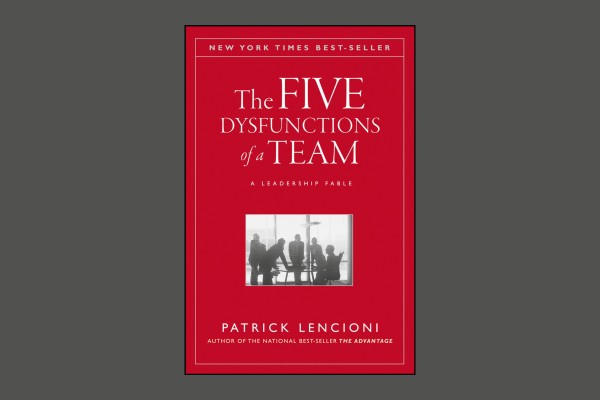MY BOOK LIFE
"The 5 Dysfunctions of a Team" by Patrick Lencioni
June 12, 2024
Overview
The 5 Dysfunctions of a Team by Patrick Lencioni uses a narrative approach to expose the common pitfalls that derail team effectiveness. Through the story of a fictional company struggling with team dynamics, Lencioni illustrates how issues like lack of trust, fear of conflict, and avoidance of accountability can hold even the most talented groups back. The book emphasises the importance of vulnerability, open communication, and shared responsibility in creating a high-performing team.
Alongside the fable, Lencioni provides a clear framework for identifying and overcoming these dysfunctions, making the book both relatable and actionable. His insights apply to teams of all sizes and industries, offering practical advice for leaders looking to foster collaboration and commitment. By addressing foundational issues like trust and accountability, The 5 Dysfunctions of a Team empowers leaders to build cohesive teams that not only perform well but also enjoy working together.
Key Themes
- Absence of Trust: A lack of vulnerability leads to fear of admitting mistakes or weaknesses, stalling team progress.
- Fear of Conflict: Teams that avoid healthy, productive debate miss out on innovation and problem-solving opportunities.
- Lack of Commitment: Without clear decisions, team members struggle to buy into collective goals.
- Avoidance of Accountability: Reluctance to hold peers accountable compromises performance and shared responsibility.
- Inattention to Results: Prioritising personal goals over team success undermines the group's overall effectiveness.
My Takeaways
The 5 Dysfunctions of a Team is a must-read for any business team, and it had a profound impact on mine. The book pointed out some of the hidden weaknesses in our organisation that were quietly holding us back. While we had a high level of confidence in each other, Lencioni’s framework highlighted areas where we could improve, especially in fostering more open conflict and stronger accountability. Addressing these challenges wasn’t always comfortable, but it was absolutely necessary for building a more cohesive and effective team.
One of the book’s biggest lessons for me was that trust forms the foundation of everything. Without vulnerability and openness, even the most talented teams can fall apart. To this day, I revisit Lencioni’s model regularly as a diagnostic tool for identifying areas of weakness and recalibrating our team dynamics. It’s a testament to the book’s power that it remains a resource I turn to years later. If you’re serious about building a team that works seamlessly together, this book is an invaluable guide.
